Function 1: Baseline Schedule
The project’s baseline resource-loaded schedule created by the planning and scheduling team needs to be formally reviewed and analyzed before it can be approved as the project’s performance schedule. The purpose of reviewing the schedule is to ensure that the schedule is reasonable and complete while the purpose of analyzing the schedule is to ensure that the schedule represents a workable plan considering available managerial and production resources.
The schedule review will address the questions:
- Is the schedule complete?
- Are activity durations reasonable?
- Are activity relationships complete?
- Are activity relationships valid?
- Is the project calendar correct?
- Is the schedule duration within the contract time?
- Are contractual milestones met?
On the other hand, the schedule analysis will address the questions:
- Is the critical path reasonable?
- Are there multiple critical paths?
- What activities are near critical?
- How do the works flow?
- Are there conflicts between concurrent activities?
- Is there an excessive amount of work at any time?
- Are there sufficient resources to support concurrent activities?
- Can subcontractors and suppliers meet the schedule? Are any activities scheduled out of season?
The schedule review checklist created using the PMWeb custom form builder is a checklist that helps to ensure that the specific requirements for each project as well as the best practices for the project schedule are formally reviewed and approved by the project control team. The checklist should be comprehensive and be linked to the relevant project specification sections and best practices.
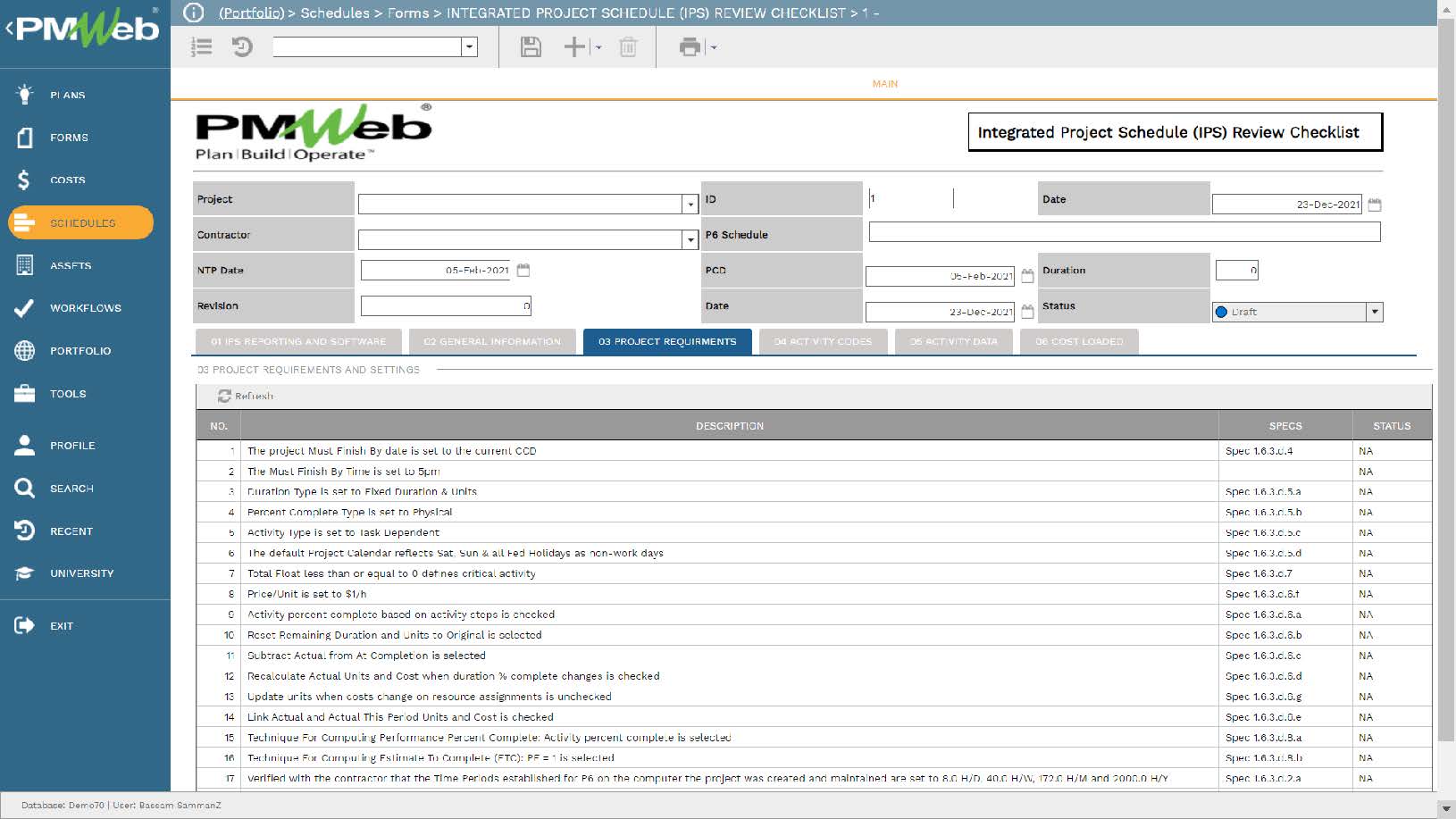
The schedule review checklist results will be captured in a report which will be formally communicated to the planning and scheduling team to address all non-compliances identified by the project schedule review team. The outcome of the schedule review items will be grouped by their pre-defined categories. It is important to provide details of the reasons for each item being considered non-compliant.
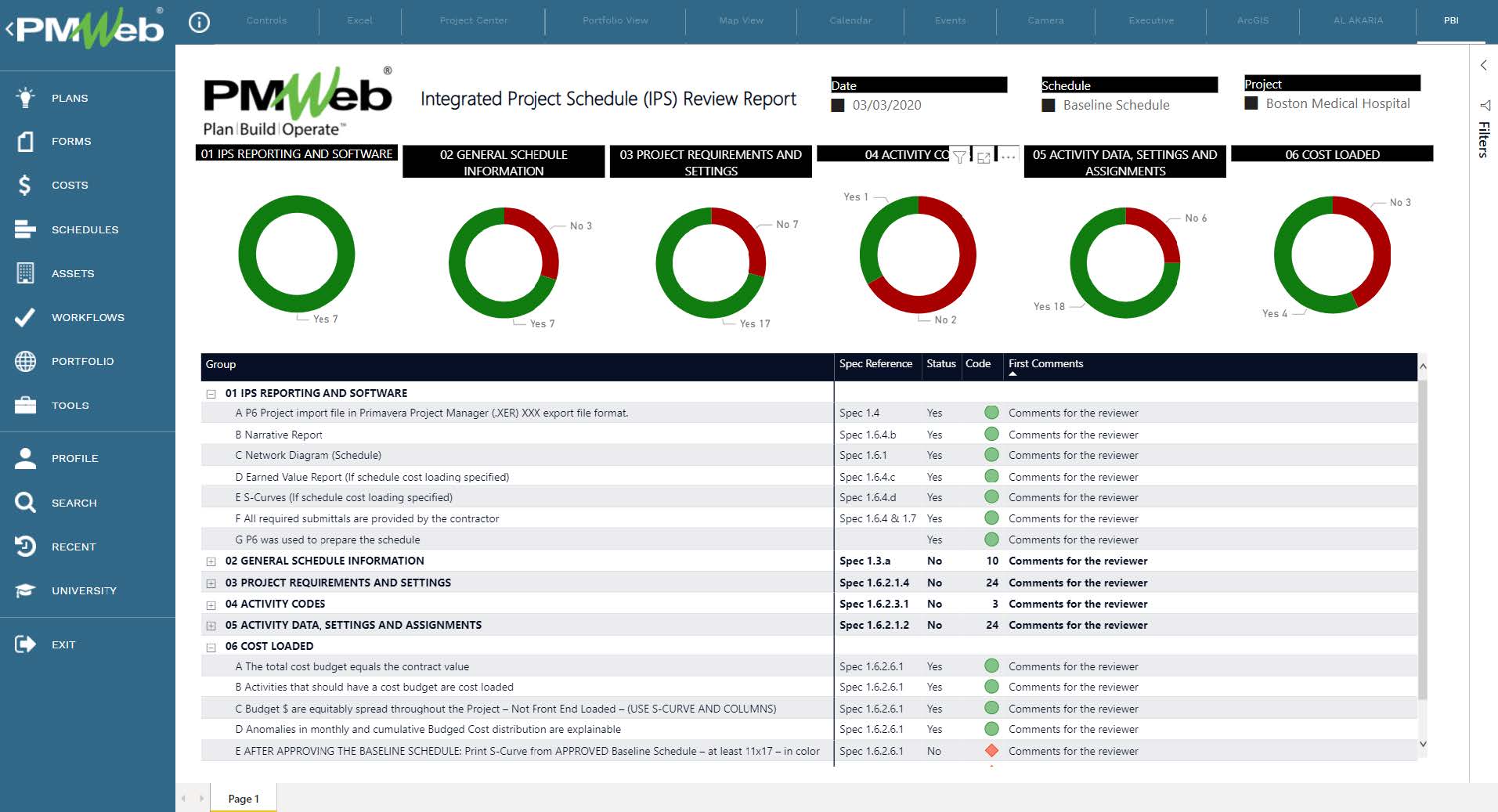
Some construction projects might have the requirement to analyze and assess baseline, updated, and revised schedule submissions using the DCMA 14-point Schedule Assessment. This assessment is a guideline established on 14 metrics that provide the possibility to make a qualitative and quantitative evaluation of a project schedule. It was developed by the Defense Contract Management Agency (DCMA).
Several software applications have been developed to perform this assessment regardless of the software used to create the project schedule. One of the output reports generated by the software is a report that summarizes the assessment scoring against the DCMA 14 metrics. Those metrics can be one of the many project schedule reports captured and reported through PMWeb.
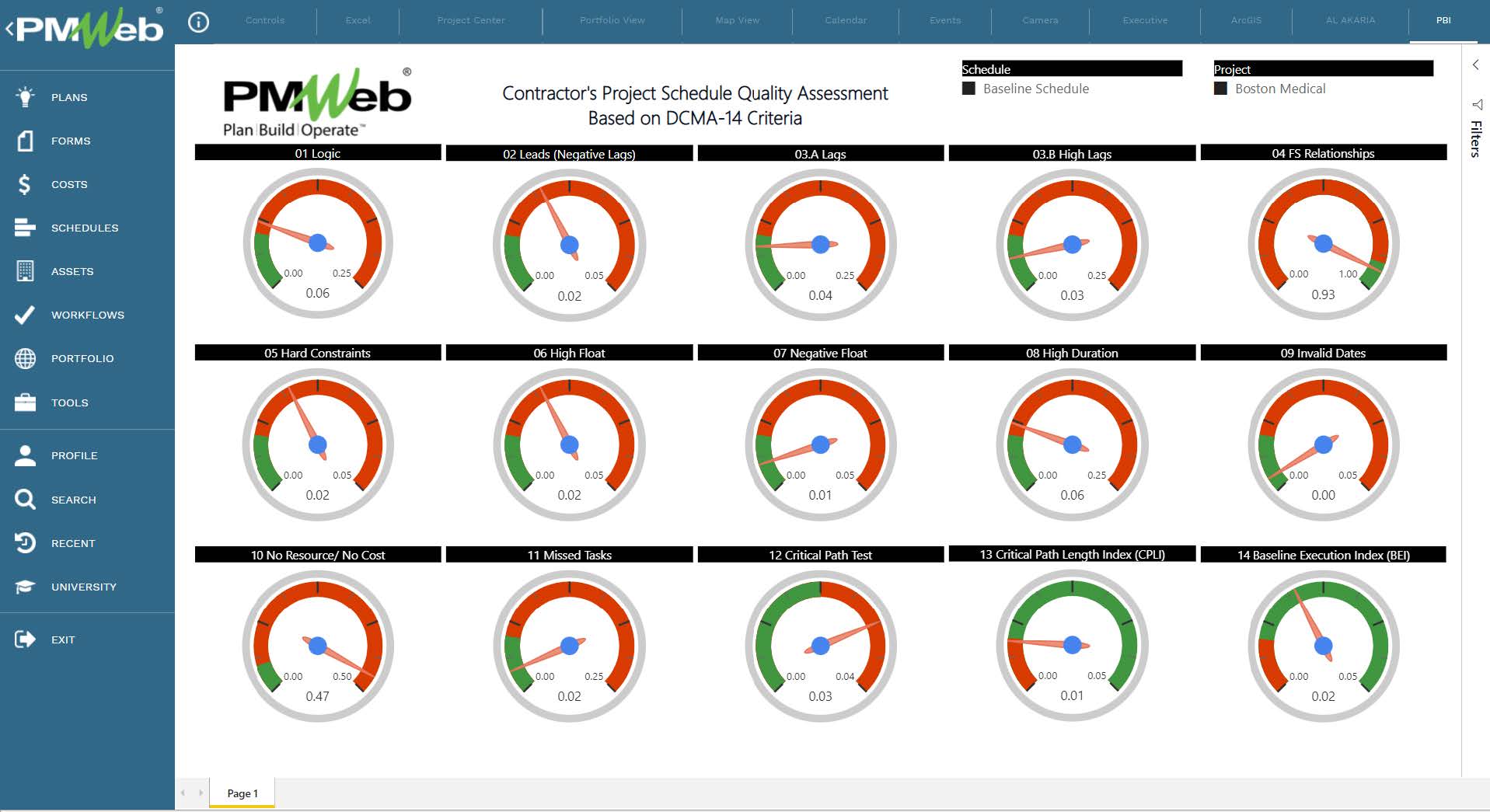
The PMWeb Scheduling module is used by the project control team to capture and document the approved baseline schedule. The approved project schedule created either in Primavera P6 or MS Project can be imported to PMWeb using the schedule command. The attachment tab allows uploading and storing the original project schedule file, and all supporting documents as well as add links to the schedule review checklist and DCMS analysis checklist.
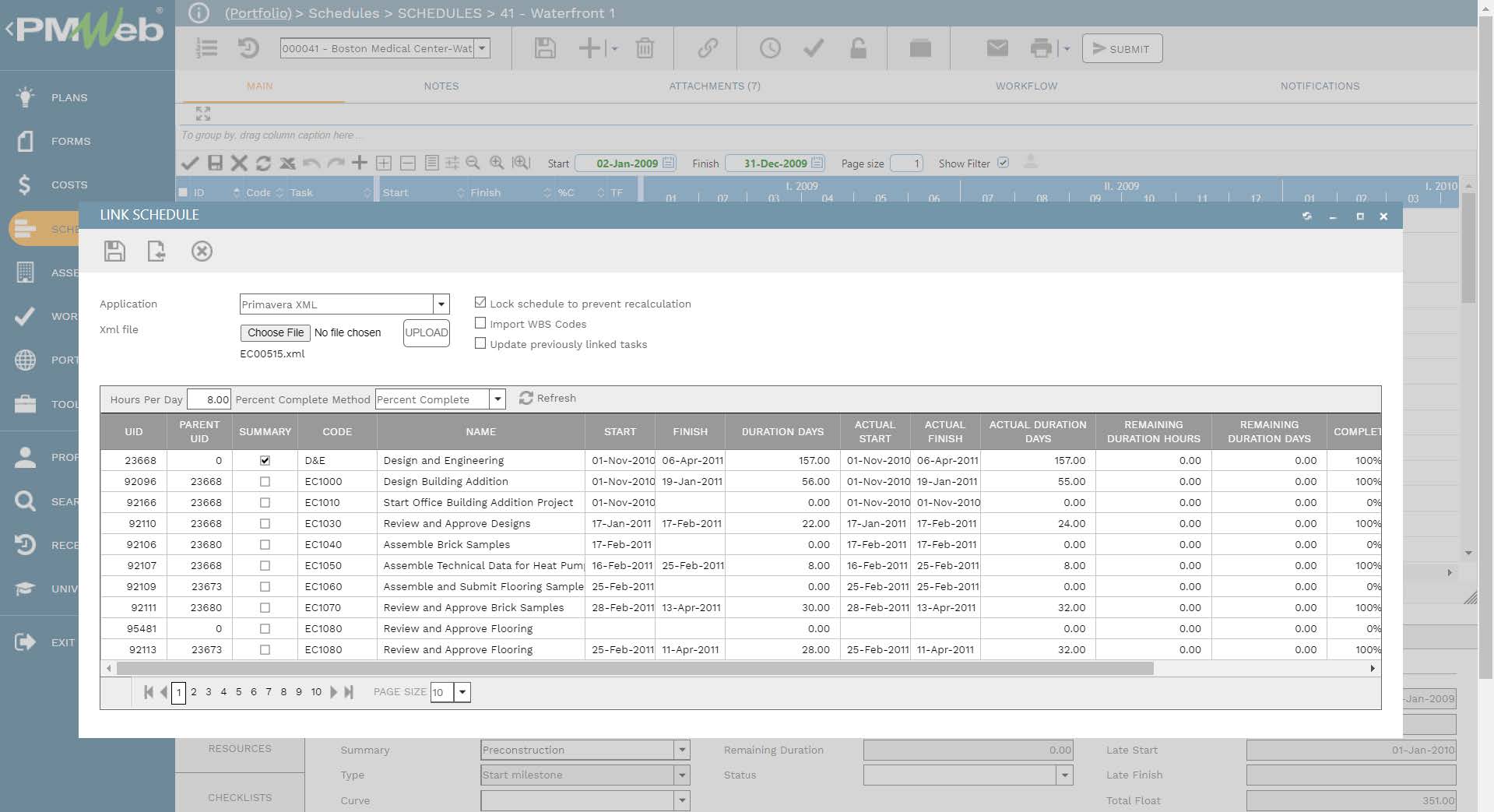
The approved baseline schedule and all subsequent schedule revisions and updates will become formal project documents that can be used to support or defend a time impact analysis and other delay-related claims. Therefore, formalizing the approval of those schedule submissions is a must requirement. Accordingly, a workflow will be assigned to the schedule module to ensure that all review and approval tasks as detailed in the delegation of authority (DoA) matrix have been fulfilled.

Finally, it is highly recommended that a narrative report explaining the integrated project schedule be part of the schedule approval submission. Unlike other projects, the integrated baseline schedule for construction can include thousands of activities to detail the contractor’s strategy to deliver the project’s scope of work (SoW) within the milestone dates. The integrated project schedule (IPS) will include those activities needed for mobilization, submittals, procurement, permits, temporary on-site facilities, on-site activities for the permanent SoW, permitting authorities’ approvals, technical reviews, and approvals, testing and commissioning, and handover and closeout, among others. The strategy for delivering capital construction projects might also require creating a phasing plan, and defining the project’s zones and segments. In addition, the schedule needs to identify any constraints that could impose a particular sequencing or approach in delivering the overall project’s SoW. Furthermore, assumptions made by the contractor to address specific unknowns which could impact the project’s delivery strategy should also be identified and explained.
In other words, submitting hundreds of pages of a nicely organized and colored integrated project schedule could be very difficult to be understood by project stakeholders whose role is not as a planning and scheduling engineer. These stakeholders, particularly, the stakeholders from the project owner, project management consultant, and supervision consultant entities must have a complete understanding of the strategy that the contractor will adopt in delivering the capital construction project, which is reflected in the integrated project schedule.
Using PMWeb, the project owner can define a template that a contractor needs to complete to prepare the IPS baseline narrative report. The PMWeb custom form builder includes the data fields for introduction, project overview, overall project plan, resource requirements, critical path description, WBS explanation, activity ID description, and construction sequencing. In addition, the narrative report will include tables to capture the details of milestones, project segments or zones, constraint dates, assumptions made, and a list of calendars used.
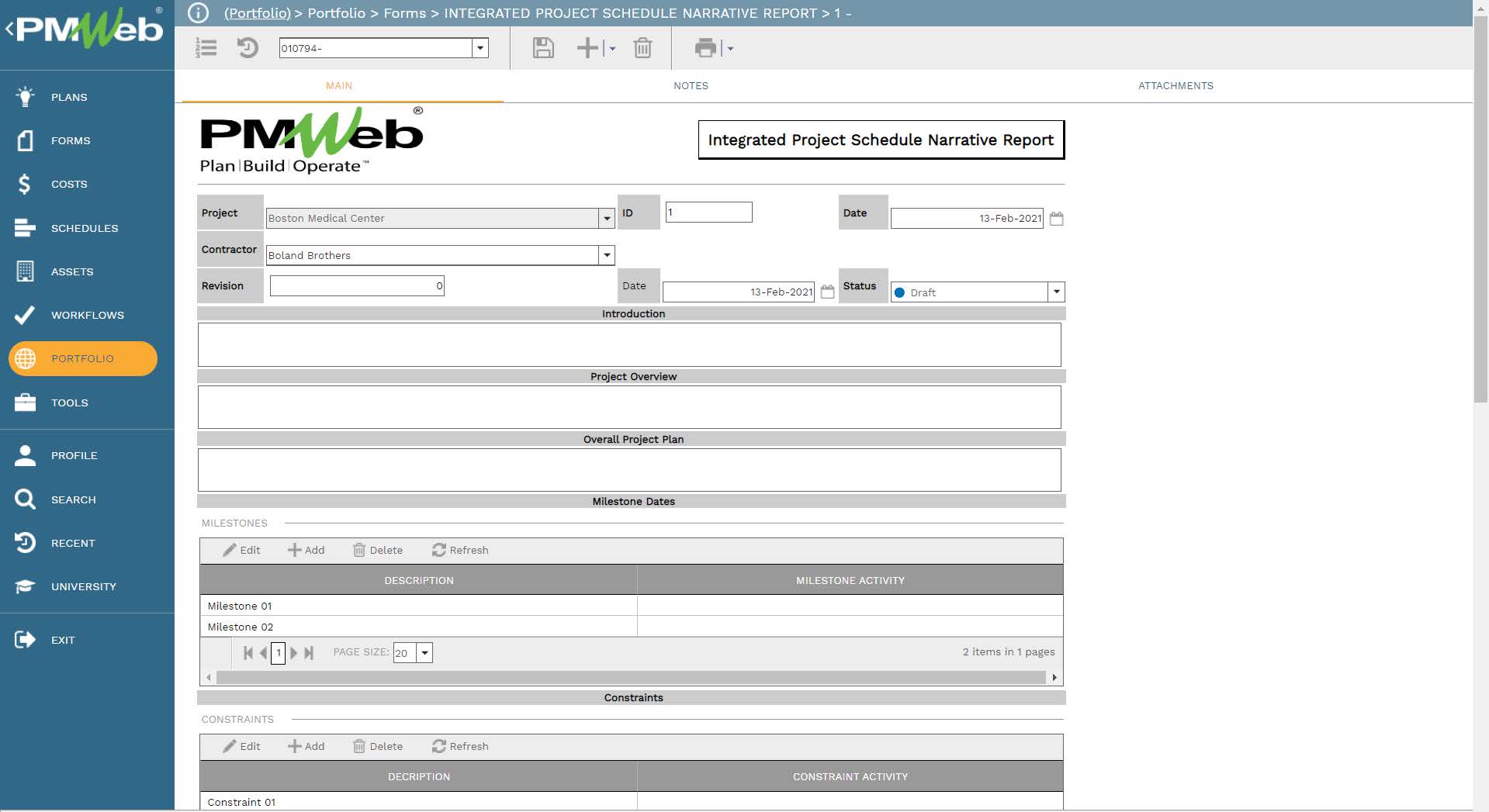
Reference
The content of this article was extracted from the book titled “Let’s Transform: Enabling Digital Transformation of Capital Construction Projects Using the PMWeb Project Management Information System – 2nd Edition”. The book was written by the author of the posted article, Bassam Samman.
The book provides project owners with oversight on how technology available today can support their efforts to digitally transform the management of their projects’ portfolios. For each capital project life cycle stage, PMWeb is used to detail how the relevant project management business processes can be digitalized to enforce transparency and accountability in delivering projects. In addition, MS Power BI was used to show how the real-time, trustworthy data captured in PMWeb can be aggregated, modeled, monitored, evaluated, analyzed, and reported at anytime, anywhere using any device.



